
Noun Clauses Definition, Functions And Example Sentences Love English
A complex sentence contains one independent clause and one or more dependent clauses, joined by a subordinating conjunction or a relative pronoun (that, who, which): I'm happy because we won the game. ("I'm happy" can be a complete sentence. "Because we won the game" cannot be a sentence by itself.) The blue jacket, which I gave him.

Simple, Compound and Complex Sentences How to Teach them The
A complex sentence is a sentence that contains an independent clause and at least one dependent clause. Typically, these statements are used to include more information to modify or explain a sentence's main idea. To connect clauses, complex sentences often use a subordinate conjunction like "since" or "because.".
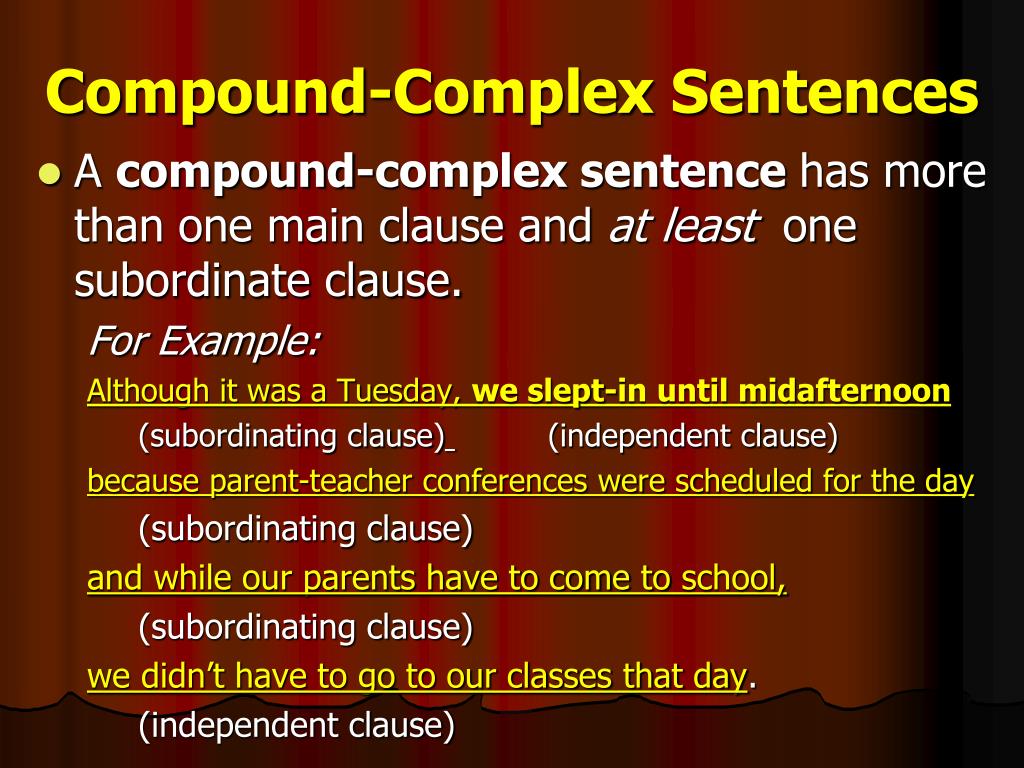
PPT COMPLEX SENTENCES PowerPoint Presentation, free download ID5814208
Example #1: Independent Clause, Dependent Clause. While complex sentences must have one independent clause and at least one dependent clause, the clauses can go in any order. Here's an example of a complex sentence where the independent clause comes first, and the dependent clause comes second:
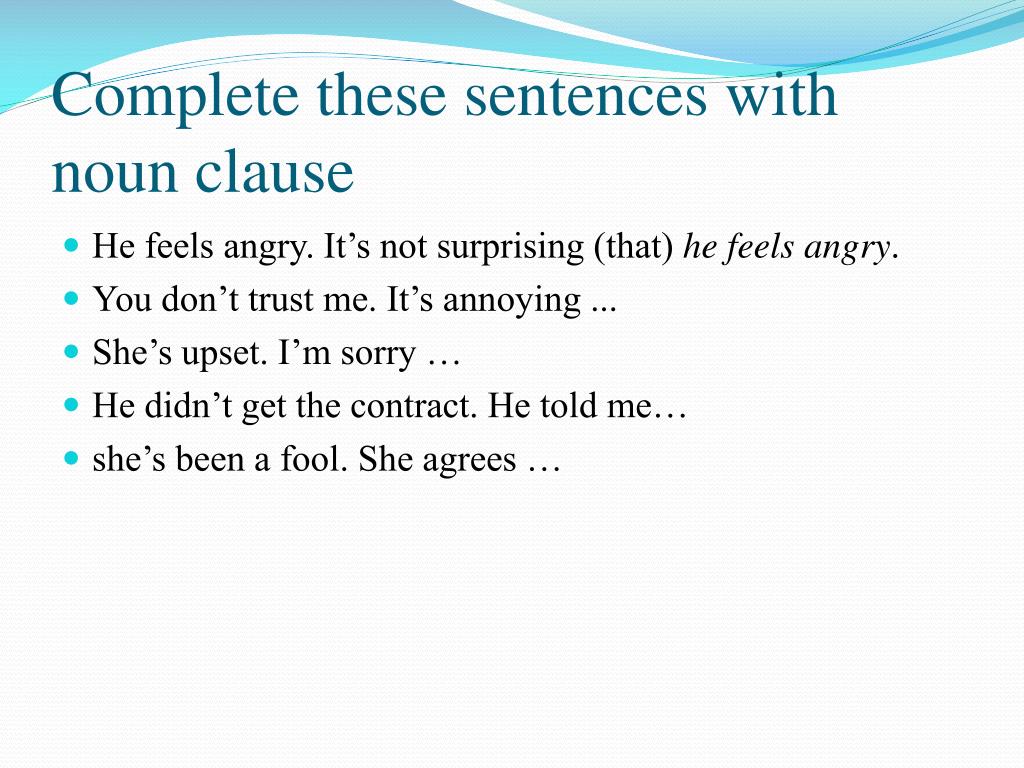
PPT Complex Sentence PowerPoint Presentation, free download ID2585615
A clause is a group of words that contains a noun and a verb. Some clauses (like independent clauses) can just be plopped onto a page without needing anything else added to them, but some clauses (dependent clauses) require an independent clause attached to them to make sense.. we have to make sure it's lemon, to be part of a sentence. Okay.

Complex Sentences by using Noun Clause Synthesis of Sentences
The three types of subordinating clauses, then, are those that act as adjectives, adverbs, and nouns. Let's look at some examples. Remember that all of these example sentences are complex because they contain an independent clause and a dependent clause. 1. Dependent adjective clauses act as adjectives. That means that they modify nouns or.
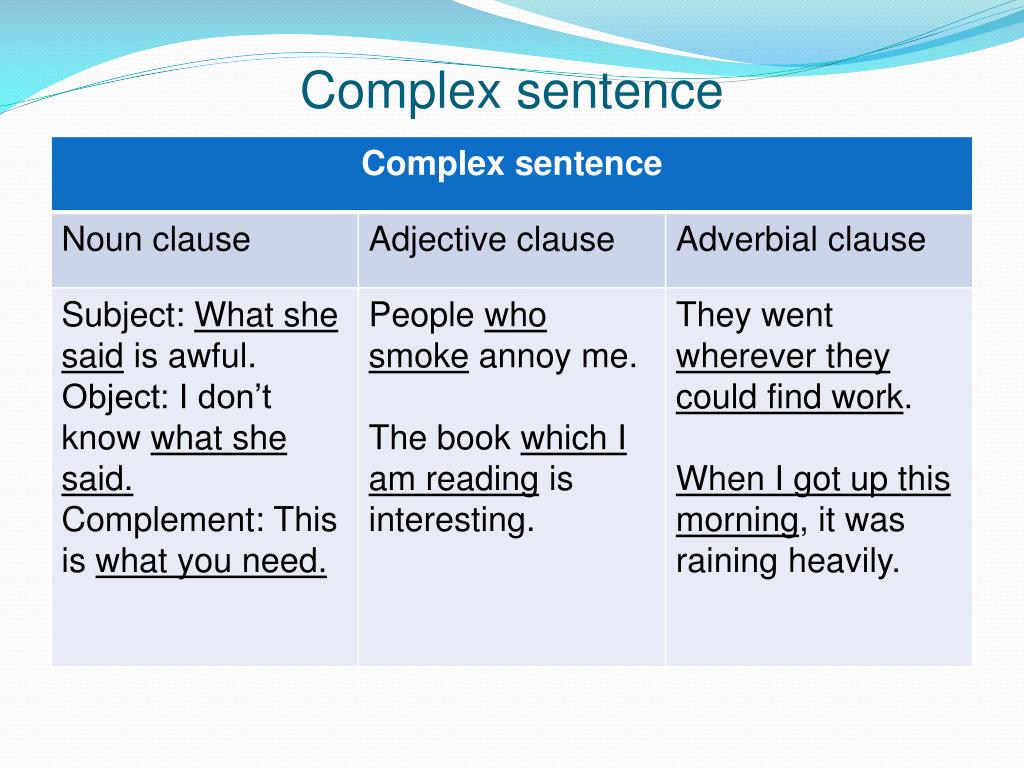
PPT Complex sentence with noun and adjective clauses PowerPoint
A complex sentence is a sentence with one independent clause and at least one dependent clause. It works best when you need to provide more information to explain or modify your sentence's main point. Complex sentences are easy to spot as they often use subordinating conjunctions like because, since, or until to connect clauses.
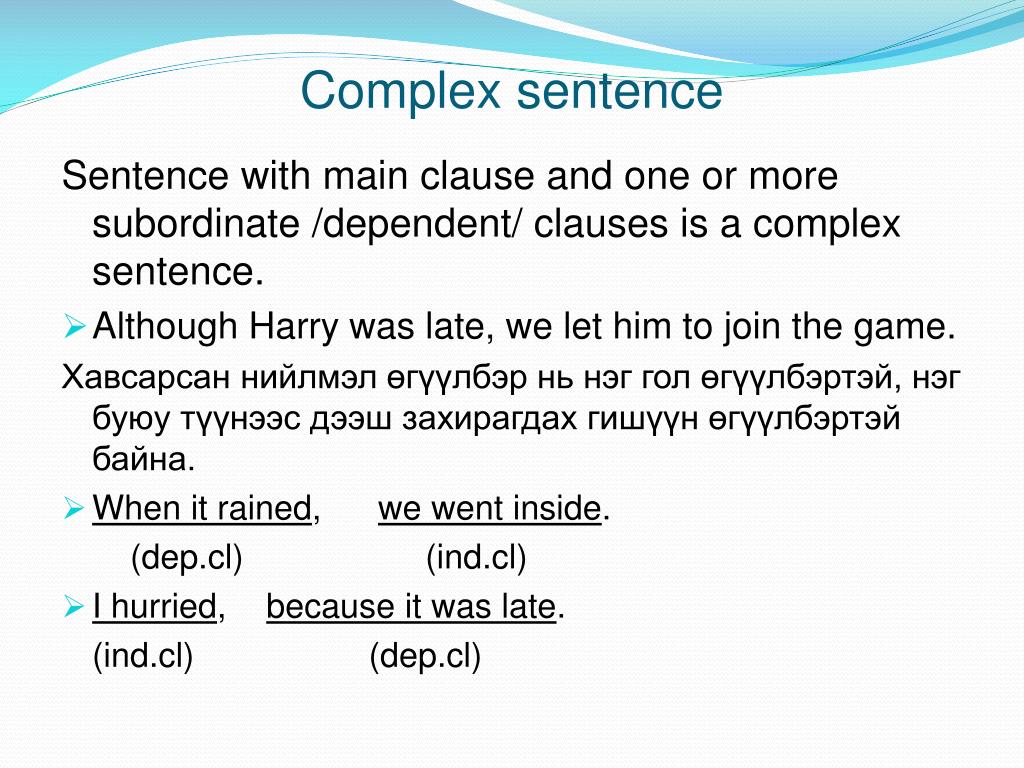
PPT Complex sentence with noun and adjective clauses PowerPoint
A complex sentence is one of four main sentence structures, all of which are shown below. In these examples, the independent clauses are shaded. A Complex Sentence. A complex sentence has an independent clause and at least one dependent clause. For example: The human brain never stops working until you stand up to speak in public. A Compound.

Noun Clauses Definition, Functions and
3. Indirect Object. Noun clauses can also act as indirect objects of the verb in the independent clause.. For example: She chose to photograph whomever was willing to pose for her.; In the sentence above, the direct object of the verb chose is the infinitive phrase to photograph. Just like a noun clause, this infinitive phrase is acting like the noun direct object.

What is Noun Clause, Example Sentences English Study Here
1. Subject Noun Clauses. For these explanations, the subjects will be in green, the verbs in blue, and the objects in red. In this type of sentence the NC (underlined) is the subject of the sentence: What causes so many difficulties in the IELTS test is the writing section. So looking at the whole sentence above, we have a subject, a verb and.
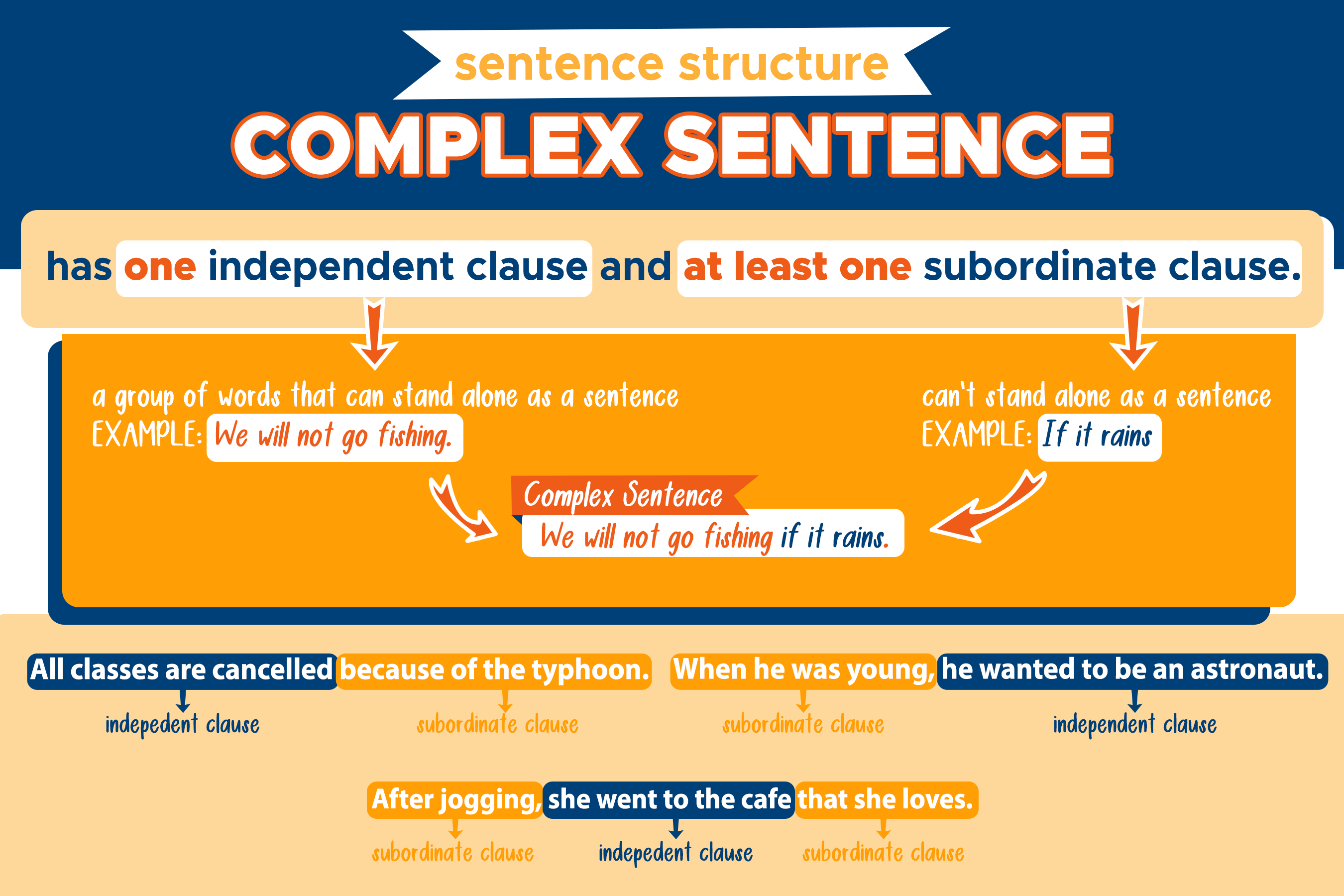
Complex Sentence Sentence Structure Curvebreakers
Complex sentences with relative clause. Note: In these examples, some relative clauses come with comma (s) (non-restrictive relative clauses) and some without commas (restrictive relative clauses). The heart that loves stays young. Jeff, who met with an accident last month, is a rocket scientist.
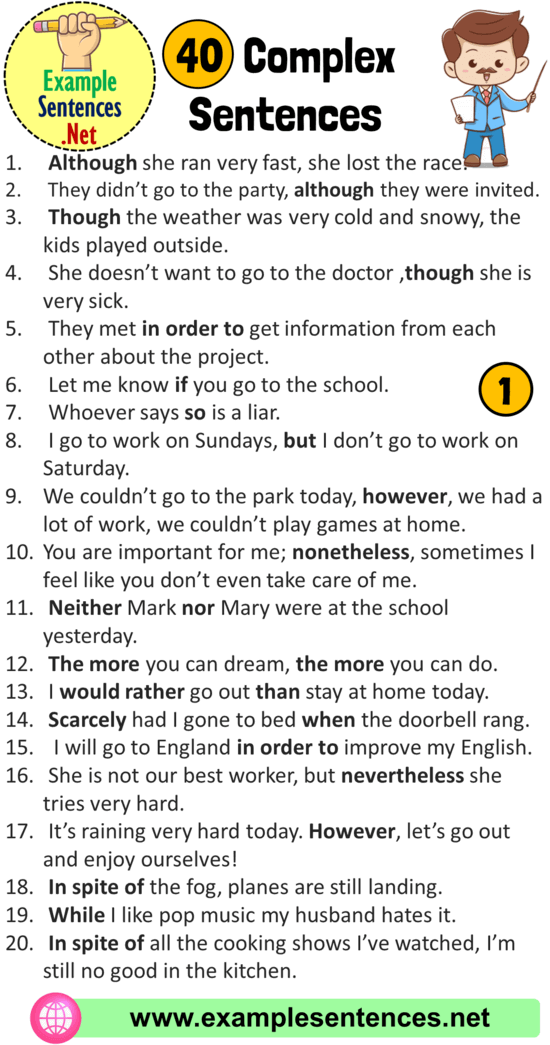
40 Examples of Complex Sentence, Complex Sentences Examples Example
A complex sentence is a sentence that contains one independent clause and one or more dependent clauses. Independent clause. A clause is a word group that contains a subject and a verb. An independent clause (which is the same as a simple sentence) is a clause that expresses a complete thought and can stand alone. Here is an example:
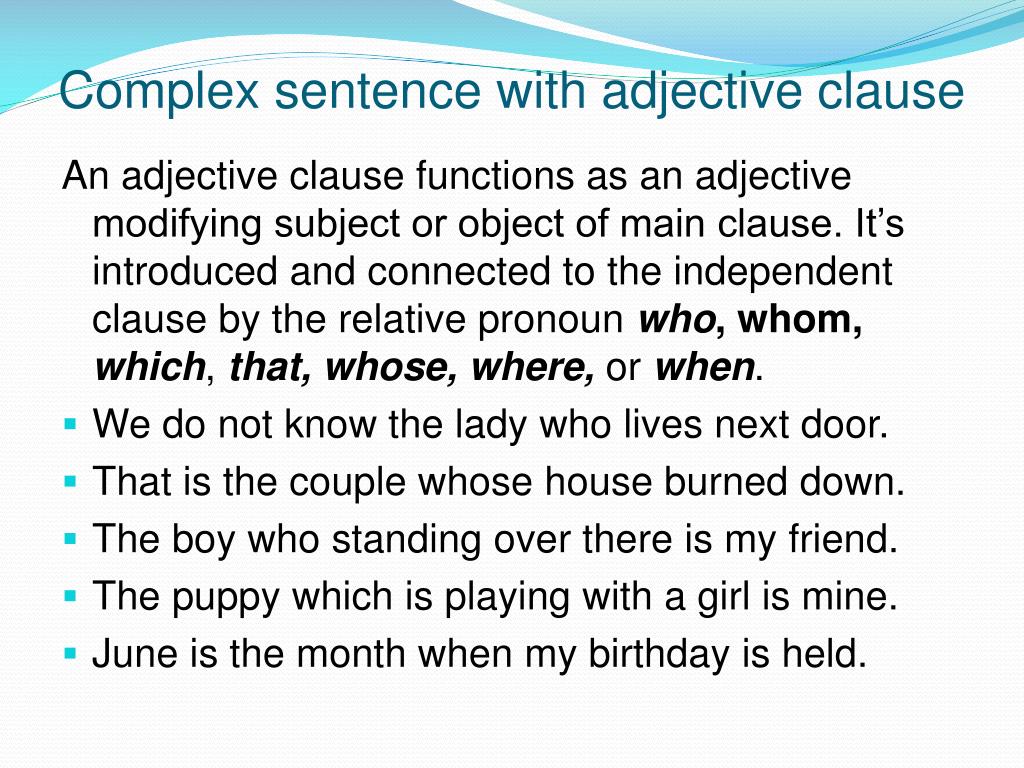
PPT Complex sentence with noun and adjective clauses PowerPoint
For example, "My cat's name is George, and he is very playful" can be broken up into "My cat's name is George." and "He loves pancakes.". Here are some examples: "To be or not to be?". "I just jogged five miles, and I feel great!". "My cat's name is George, and he is very playful.". Complex sentence.
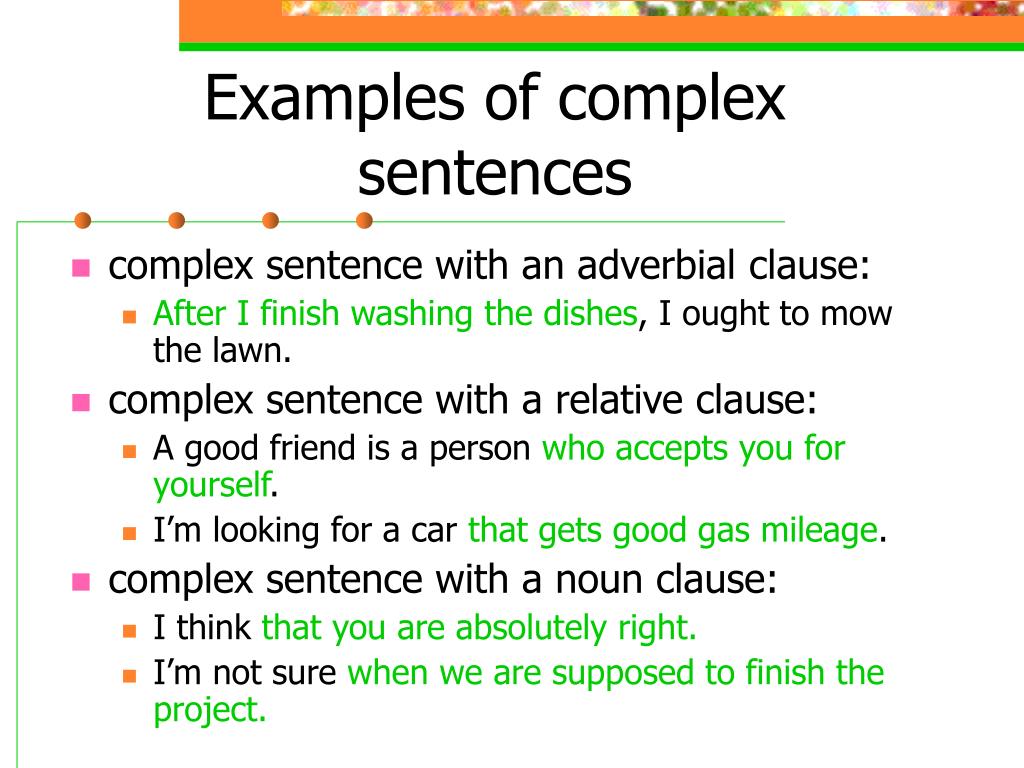
PPT Making Complex Sentences PowerPoint Presentation, free download
Complex Sentence Definition. They are one of the four types of sentences according to structure. These complete sentences contain one independent clause and at least one dependent or subordinate clause. Let's have a quick refresher on clauses. Dependent clauses or subordinating clauses cannot function as a standalone sentence.
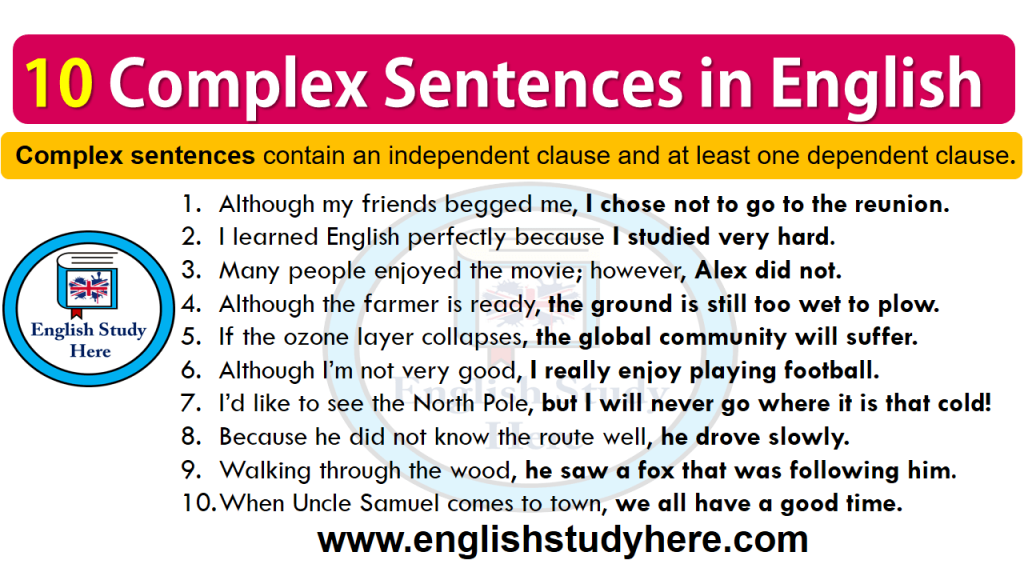
10 Complex Sentences in English English Study Here
A complex sentence, on the other hand, has one independent clause and one or more dependent clauses.A dependent clause is a clause that is not a complete thought and cannot be a sentence by itself. It can be one of three types, described in more detail below, namely noun clause, adjective clause and adverbial clause.The following are examples of complex sentences, using yellow to show the.

Complex Sentence Noun Clause PartIII YouTube
For instance: "because it's relaxing.". Combine the Two Clauses: Link the independent and dependent clauses to form a complex sentence. In our example, it becomes: "I enjoy reading because it's relaxing.". Check for Correct Punctuation: If the dependent clause comes first, use a comma before the independent clause.
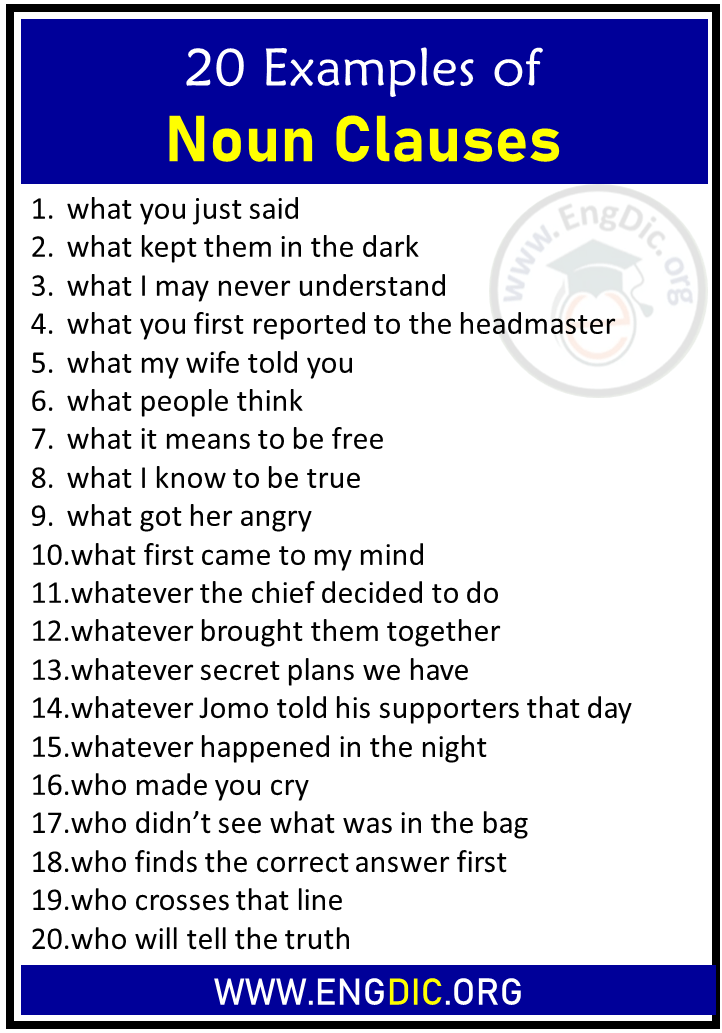
20 Examples of Noun Clauses EngDic
A dependent clause is a clause that is not an complete ponder and could breathe a sentence by itself. It can be one of three types, described in more detail below, namely noun clause, adjective clause and advantive clause. The following become real of complex sentences, using yellow to show the independent proviso, and blue to show the.